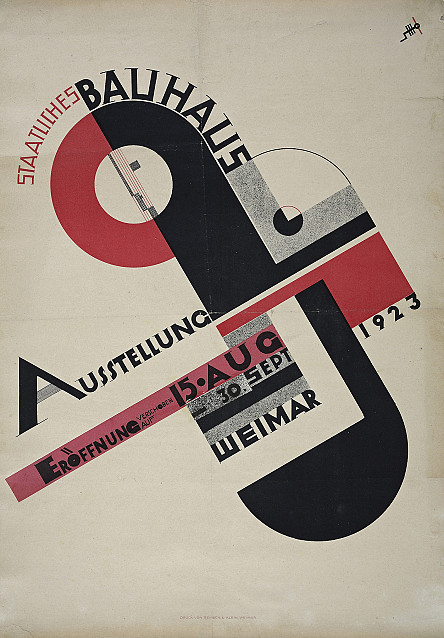
Joost Schmidt, Poster for the Bauhaus Exhibition in Weimar, 1923, Bauhaus-Archiv Berlin
It was Moholy-Nagy who introduced the ideas of the New Typography to the Bauhaus starting in 1923. From then on, typography began to play a decisive role in the Bauhaus’s publicity work and in the development of an unmistakable look for the college. At the Bauhaus in Dessau, Moholy-Nagy’s student Herbert Bayer took over the workshop for typography and advertising that was then set up. Within a very short period, he was able to develop it into a professionally working studio for graphic design that increasingly received orders from outside the college. From 1928, his successor Joost Schmidt introduced a systematic course in type design and commercial graphic design, which he also extended to include the field of exhibition design. This led to experimental forms of presentation using architecture, sculpture, photography and typography, which were to decisively shape the image of the Bauhaus at travelling exhibitions and trade fairs.